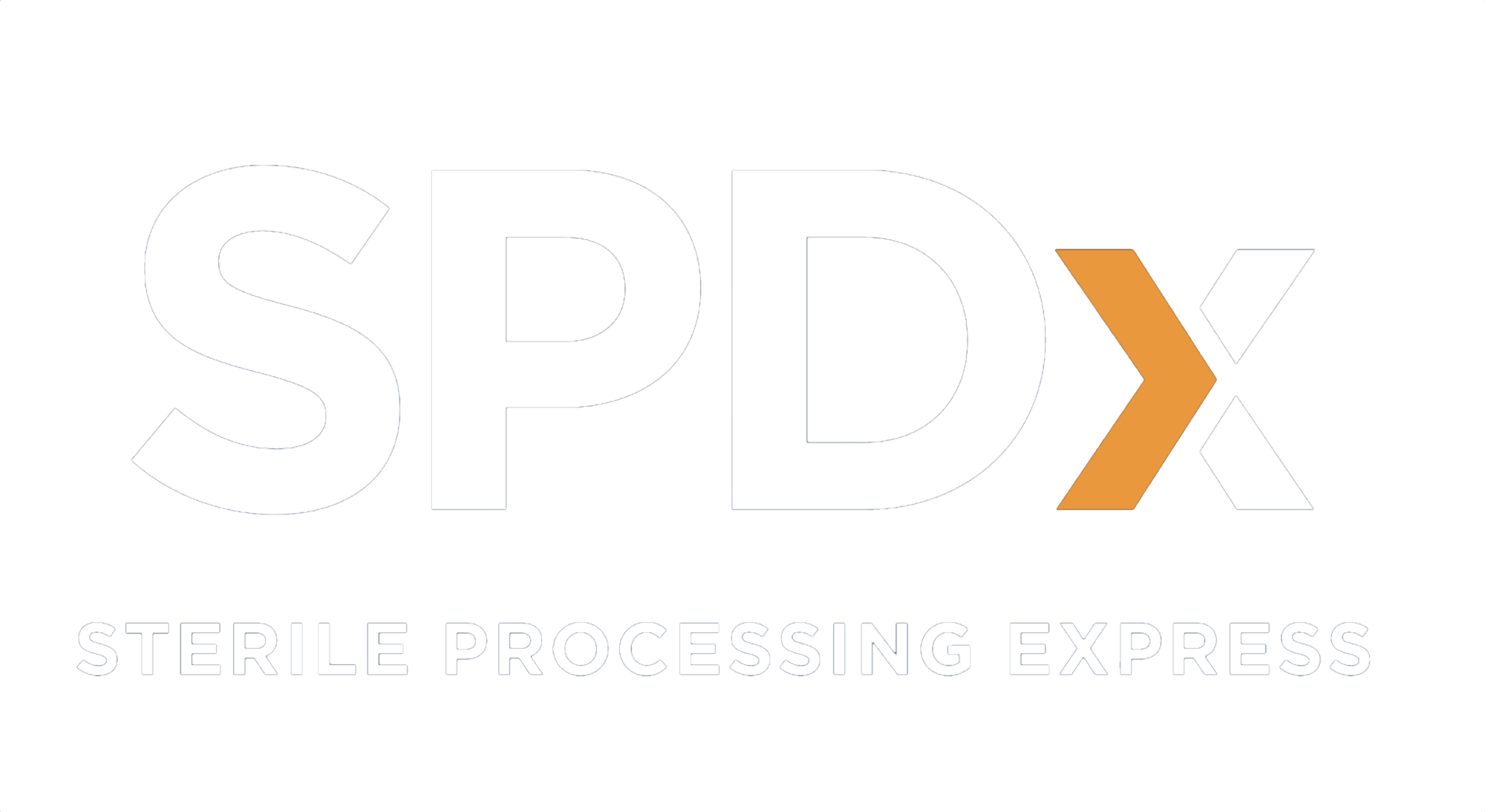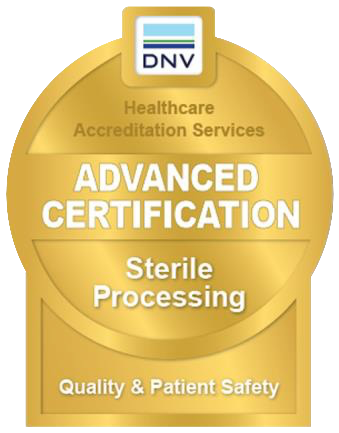Why is compliance with IFU sterile processing essential in safeguarding patient health? Incorrect sterilization of medical instruments can lead to dire consequences. This article dives into how following manufacturers’ Instructions for Use (IFUs) is crucial in preventing infections and outlines practical steps for healthcare facilities to stay compliant.
Key Takeaways
- Instructions for Use (IFU) play a critical role in sterile processing departments, ensuring that medical devices are properly cleaned and sterilized, which is essential to minimize the risk of hospital-acquired infections and maintain patient safety.
- Healthcare facilities must manage and comply with a diverse range of IFUs for different medical devices, which includes standardization efforts such as those led by AAMI, as well as the development of accessible, clear, and effective IFUs that satisfy regulatory expectations and enhance sterilization practices.
- SPDx exemplifies best practices in the sterile processing within the Ambulatory Surgery Center (ASC) environment by adhering to AAMI standards and manufacturer IFUs, enhancing efficiency, revenue growth, and patient care through advanced sterilization technologies and experienced leadership.
The Importance of IFU Compliance in Sterile Processing
In the complex world of healthcare, every action is meticulously planned for precision and safety. Central to this system is the sterile processing department, where instruments that will be used in surgery are sterilized to be ready for use. Following the manufacturer’s Instructions for Use (IFU) is crucial in this process, as it minimizes the risk of hospital-acquired and surgical site infections. It’s not merely about sterilizing instruments; it’s about adhering to the meticulous methods validated by manufacturers to ensure the highest standards of sterility, protecting both healthcare facilities and patients.
The FDA requires manufacturers to provide Instructions for Use (IFU), which are not merely suggestions but blueprints for infection prevention. These documents are pivotal for sterile processing professionals, guiding them through the proper cleaning and disinfection required for each unique medical device. Before a new device graces the halls of a hospital, sterile processing staff must ensure that the IFUs can be followed to the letter, underscoring the integral relationship between device acquisition and the capacity for compliance.
The role of IFUs in sterile processing
The journey of reusable medical devices, including surgical instruments, from patient to patient is fraught with potential risks. IFUs are the guardians of this journey, ensuring that each piece of surgical equipment is effectively cleaned and can withstand the rigor of steam sterilization. They provide critical information, including how to dismantle complex medical instruments and the precise chemistry required to remove soil and ensure proper disinfection. Following the ANSI/AAMI/ISO 17664 standard, they are not just instructions but are meant to serve as a covenant between device manufacturers and sterile processing professionals to uphold the highest standards of care.
Every detail matters—from the dilution of cleaning agents to the exposure times in ultrasonic cleaners or washer disinfectors. These specifics are not arbitrary; they are the result of extensive validation testing to ensure that every step in the sterilization process delivers on its promise of sterility assurance. The manufacturer’s IFU is a meticulously crafted document, leaving no stone unturned in the pursuit of a successful sterilization process, including the importance of manual cleaning.
Impact on patient care and safety
The stakes couldn’t be higher. A single lapse in IFU compliance can compromise the integrity of a medical instrument, turning a routine surgical procedure into a significant risk for patient safety. Hospital-acquired infections, often a direct result of inadequate training or neglecting to follow IFUs, are not just statistics—they impact patients’ lives in the most profound ways. To ensure patient safety, it is crucial to recognize that the cornerstone of healthcare and the very essence of quality care hinges on the diligent application of IFUs.
Imagine a world where each medical problem is compounded by the very tools meant to heal. This is the reality when IFUs are not given the respect they deserve. The risk is especially pronounced in the reprocessing of endoscopes, where a reliable system is paramount to minimizing infection risks. By following manufacturers’ instructions, healthcare facilities can uphold a sacred trust with their patients, offering peace of mind and the assurance of safe, quality care.
Navigating the Complexities of IFUs
Wading through the sea of manufacturer instructions for medical devices can be daunting. Each device and its accompanying instrumentation comes with its own IFU, a unique set of guidelines as varied as the systems themselves. Healthcare facilities face the monumental task of managing these documents, ensuring that each sterilization process adheres to the specific instructions provided by the device manufacturer.
The challenge is not insurmountable, but it requires:
- a meticulous approach
- a commitment to quality control
- the development of standardized processes that can accommodate the diversity of these critical information sources.
Standardization efforts
Amidst the complexities, standardization is led by Advancement of Medical Instrumentation® (AAMI). Their initiatives aim to provide a documented method that device manufacturers can follow, creating IFUs that are clear, uniform, and easily accessible across the industry. The TIR12:2020 report is a testament to these efforts, guiding manufacturers in crafting IFUs that meet the joint commission standards and regulatory bodies’ expectations for clarity and efficacy testing.
This collaborative endeavor brings together healthcare technology management professionals, testing labs, and device manufacturers, all united in the quest for IFUs that speak a common language—one that is understood by sterile processing departments everywhere. The revised TIR12 report reflects a shared vision, producing IFUs that not only meet industry standards but also enhance the sterilization processes through improved clarity and procedural transparency.
Balancing multiple IFUs and best practices
With policies in place that mandate the presence of written IFUs for every instrument, healthcare facilities take a proactive stance in ensuring no item is processed without this guiding document. Larger facilities often turn to online IFU subscription sites, ensuring that the most current manufacturer instructions are always at hand for the sterile processing staff. Accessibility is key, with computer access in the decontamination room and hard copies serving as an essential backup in this high-stakes environment.
Training is an ongoing journey, not a destination. SPD personnel must be vigilant, regularly updating their knowledge base with new IFUs and meticulously implementing procedures. This dedication not only ensures compliance but also acts as a shield, protecting staff from the potential dangers of injuries and chemical exposures, thus elevating IFU compliance to a critical component of workplace safety.
SPDx and the ASC Environment
In the bustling world of Ambulatory Surgery Centers, time and efficiency are paramount. Our offsite sterilization service model operates like a well-coordinated symphony, with pre-scheduled deliveries and coordinated pickups that streamline the workflow of Ambulatory Surgery Centers (ASCs). This efficient system not only drives revenue growth but also enhances patient care. The real-time information system that SPDx employs offers the following benefits:
- Provides stakeholders with a window into a world of transparency
- Allows stakeholders to monitor the journey of every instrument
- Offers clarity and precision, like a well-tuned clock
Benefits for stakeholders
The ripple effect of our offsite sterilization model is far-reaching, touching every stakeholder in the healthcare ecosystem. Medical facilities see a tangible impact on their bottom line, as our services allow for the expansion of services without the burden of capital investment, maximizing the efficiency and planning capabilities of ASC staff and vendors alike.
The economic benefits extend to payers, who see a reduction in healthcare costs thanks to our streamlined services. Original Equipment Manufacturers (OEMs), on the other hand, gain valuable insights and transparency regarding the utilization and location of their equipment, closing the loop on a model that benefits all involved.
Summary
Compliance with Instructions for Use (IFUs) is not merely a regulatory requirement but the cornerstone of patient safety and healthcare excellence. Adhering to IFUs ensures that every instrument and device used in medical procedures is sterilized and maintained according to the manufacturer’s precise specifications. This meticulous process minimizes the risk of infections, including hospital-acquired and surgical site infections, protecting patients from potential harm.
Moreover, strict compliance with IFUs supports the standardization of procedures across healthcare facilities, promoting consistency and reliability in patient care. It also reflects a commitment to the highest standards of healthcare practice, demonstrating to patients and regulatory bodies alike that the facility prioritizes safety and quality.
By following IFUs, healthcare facilities can optimize the performance and longevity of their medical instruments, reducing the likelihood of malfunctions and the need for costly replacements. This attention to detail not only enhances operational efficiency but also contributes to better clinical outcomes and overall patient satisfaction.
Frequently Asked Questions
What are Instructions for Use (IFUs) and why are they important in sterile processing?
Instructions for Use (IFUs) are detailed guides provided by medical device manufacturers that outline the specific steps for the proper cleaning, disinfection, and sterilization of medical devices and instrumentation. They are crucial for ensuring that devices are safely reprocessed, minimizing the risk of hospital-acquired infections, and ensuring patient safety.
How do healthcare facilities navigate the complexities of multiple IFUs?
Healthcare facilities navigate the complexities of multiple IFUs by developing standardized processes and policies, using online subscription sites, and ensuring regular training for sterile processing staff. This ensures easy access to current instructions and adherence to the latest updates and procedures.
What is SPDx and how does it impact the ASC environment?
SPDx is a state-of-the-art facility that adheres to AAMI ST 79 standards and manufacturer-issued IFUs, contributing to the efficiency and revenue growth of Ambulatory Surgery Centers through pre-scheduled deliveries and pickups of sterile instruments, improving patient safety and reducing costs.
What are the benefits of SPDx’s approach to sterile processing for different stakeholders?
SPDx’s approach to sterile processing benefits medical facilities, patients, payers, and OEMs by supporting revenue growth, providing safe care options, lowering healthcare costs, and offering transparency into equipment use. Overall, the approach has positive implications for all stakeholders involved.
What standardization efforts exist to help with IFU compliance?
AAMI has spearheaded initiatives, such as TIR12:2020, to standardize IFU compliance, working closely with healthcare professionals, manufacturers, and regulatory bodies to achieve clear and consistent reprocessing instructions.

